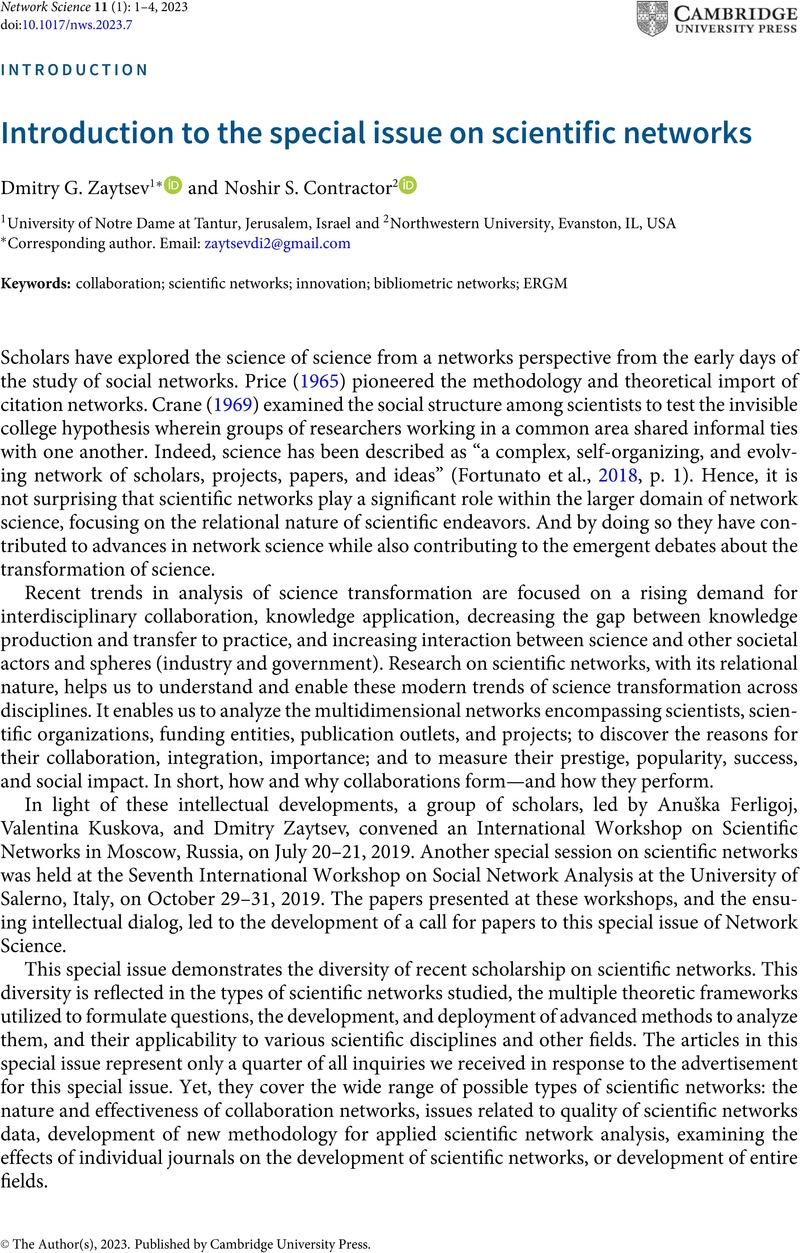No CrossRef data available.
Article contents
Introduction to the special issue on scientific networks
Published online by Cambridge University Press: 12 April 2023
Abstract
An abstract is not available for this content so a preview has been provided. Please use the Get access link above for information on how to access this content.

- Type
- Introduction
- Information
- Copyright
- © The Author(s), 2023. Published by Cambridge University Press
References
Crane, D. (1969). Social structure in a group of scientists: A test of the, invisible college. hypothesis American Sociological Review, 34(3), 335–352.CrossRefGoogle Scholar
Edgerton, J. F., Cranmer, S. J., & Finomore, V. (2022). How teams adapt to exogenous shocks: Experimental evidence with node knockouts of central members. Network Science, 10(3), 261–282.CrossRefGoogle Scholar
Evans, J. A., & Aceves, P. (2016). Machine translation: Mining text for social theory. Annual Review of Sociology, 42(1), 21–50.CrossRefGoogle Scholar
Fortunato, S., Bergstrom, C. T., Börner, K., Evans, J. A., Helbing, D., Milojević, S. … Barabási, A.-L. (2018). Science of science. Science, 359(6379), doi: 10.1126/science.aao0185.CrossRefGoogle ScholarPubMed
Hollway, J., Lomi, A., Pallotti, F., & Stadtfeld, C. (2017). Multilevel social spaces: The network dynamics of organizational fields. Network Science, 5(2), 187–212.CrossRefGoogle Scholar
Lakatos, I. (1968). Criticism and the methodology of scientific research programmes. In Proceedings of the Aristotelian Society, Vol. 69, (pp. 149–186). Aristotelian Society, Oxford University Press on behalf of Wiley, Oxford, England.Google Scholar
Wagner, C. S., & Jonkers, K. (2017). Open countries have strong science. Nature, 550(7674), 32–33.CrossRefGoogle ScholarPubMed
Price, D. J. (1965). Networks of scientific papers. Science, 149(3683), 510–515.CrossRefGoogle ScholarPubMed
Wang, D., & Barabási, A. L. (2021). The science of science. Cambridge University Press, Cambridge, England.CrossRefGoogle Scholar
Wang, D., Song, C., & Barabási, A. L. (2013). Quantifying long-term scientific impact. Science, 342(6154), 127–132.CrossRefGoogle ScholarPubMed


